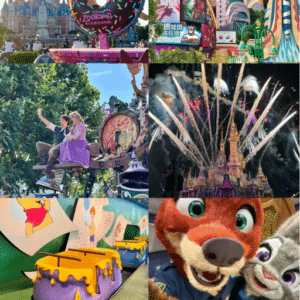Shanghai is a magnificent city that fuses ancient appeal with modern trends and is among the most thrilling attractions globally. If you are a daring person, a culture lover, or just yearning for distinctive experiences, this vivid city has it all. Shanghai has many must-see spots that awe and motivate people, from iconic landmarks to architectural masterpieces, vivid markets, and tranquil gardens. The guide presents fifteen places that pleasure enthusiasts must visit to experience the town’s dynamic and vibrant atmosphere. Prepare your mind to find out about the memories of Shanghai that can be found nowhere else!
What are the top attractions in Shanghai for first-time visitors?
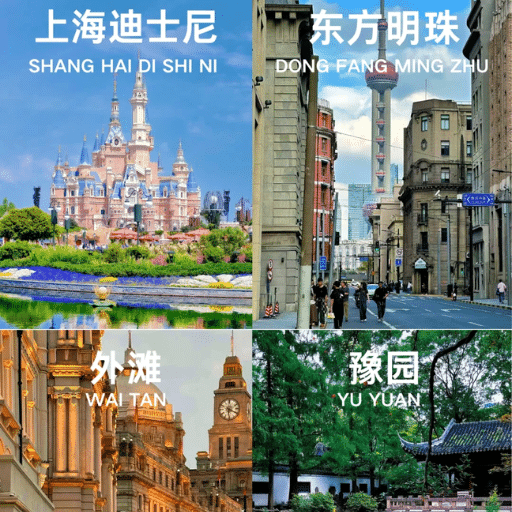
1. The Bund
This historic waterfront space displays Shanghai’s impressive skyline, mixing French colonial-style buildings with modern skyscrapers. Take a walk to see beautiful city sights or take a night view of the city.
2. Yu Garden
An exceptional classical Chinese garden with pavilions, a lake, and verdant foliage that gives visitors a fitting introduction to Shanghai’s cultural heritage.
3. Oriental Pearl Tower
This famous TV tower is known for its artistic building structure, observation deck from which visitors can have panoramic views of the city, and revolving restaurant.
4. Nanjing Road
Nanjing Road is one of the busiest shopping streets in the world, and high-end stores sit side-by-side with small boutiques and street vendors.
5. Jade Buddha Temple
Jade Buddha Temple is a peaceful Buddhist shrine that showcases beautiful jade statues; it is, therefore, one of the sites anyone looking for peace and spiritual fulfillment should visit while in China.
6. Shanghai Tower
The tallest building in China, this tower has an observation deck, which provides breathtaking views of different parts of the city and futuristic architecture.
7. Tianzifang
A delightful labyrinth consisting of narrow lanes lined by craft shops, artists’ ateliers, and comfortable coffee houses that capture the spirit of much-maligned bohemian Shanghai.
8. Shanghai Disneyland
Shanghai Disneyland is a fantastic place for families with children, offering various entertainment and attractions for people of all ages.
9. People Square
This place is always full of life and fun to be in as it is surrounded by many cultural landmarks, including the Shanghai Museum and Grand Theatre, making it a center for culture in the city.
10. Zhujiajiao Water Village
Right outside Shanghai lies this historical water village, where the canals are gorgeous, stone bridges have been built, and traditional Chinese architecture still exists today. It invites you into China’s history.
Exploring the iconic Shanghai Tower: A view from the top
My Shanghai Tower visit was just mind-blowing. Being 632 meters tall, it is the tallest high-rise building in China and gives a view of the Pudong skyline like no other. A ride in the fastest lift on earth was quick and efficient since I was at the observation deck before long. From there, I could see breathtaking city views, especially during sunset when city lights started illuminating towards Horizons. Furthermore, this tower had a unique design and sustainable elements such as a double skin façade, underscoring its notable modernist architect’s touch.
Discovering Chinese art at the Shanghai Museum
The Shanghai Museum is home to more than 120,000 pieces of art and historical artifacts that date back thousands of years, most of which were from ancient China. Among them are bronzes, ceramics, paintings, calligraphy works, jade objects, and old coins representing Chinese culture’s depth. Its standout element is its collection of ancient Chinese bronze wares from the Shang to Zhou dynasties that show the artistry behind them and their cultural importance for various ceremonies.
Suffice it to say that a stunning collection of ceramics is available in the museum, ranging from Neolithic painted pottery to exemplary porcelain from the Ming and Qing dynasties. Another attraction includes traditional Chinese paintings with refined brushwork and harmonious compositions that reflect the respective philosophies of those periods. The jade section highlights intricately carved pieces that highlight its importance in Chinese rituals and symbols.
Technically, the architecture of this museum is something out of this world. It was built and shaped like a typical bronze Chinese vessel called Ding, which meant harmony between heaven and earth. At 39,200 square meters with 11 galleries and three special exhibition halls, this museum has enough space for all art forms under the sun. With visits almost every day apart from Mondays, the Shanghai Museum remains free to everyone, allowing access to our cultural heritage. In addition, it is not only a place where one can observe art but also a place where China’s deep-rooted history may be felt on an intense level by an individual human being who stands there in person.
Immersing in history at the Shanghai Urban Planning Exhibition Center
Shanghai Urban Planning Exhibition Center is the place to glimpse how Shanghai has changed over time while fusing the past with the future. Found around People’s Square, this facility has miniature maps of Shanghai featuring an outstanding 1:500 version of the city, providing a sense of its ambitious urban planning. The five-floor interactive exhibits allow visitors to engage with touch screens, multimedia presentations, and old photographs, making it fun and enlightening. Additionally, the fair covers green city projects and plans for the coming years, showing what has been happening in different parts of Shanghai. This center uses contemporary projection techniques and digital mapping tools to demonstrate how urban planning shapes one of the most dynamic cities in the world. Generally, entrance costs about ¥30, and its doors are open from Tuesday to Sunday only, except on Mondays.
How can I experience the best of old and new Shanghai?
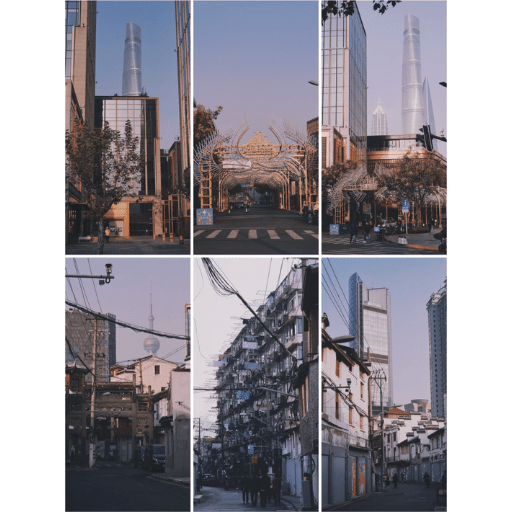
To get a feel of the old and the new Shanghai, first visit historical areas like Bund and Tianzifang. This will entail visiting places with historic buildings where colonialism was evident. The transition comes in as you walk around landmarks such as the Lujiazui skyline, with the Oriental Pearl Tower standing out prominently. These should be combined with a trip to the Shanghai Urban Planning Exhibition Center to understand this city’s changes over time better. Balancing these contrasting experiences will enable one to appreciate how traditional culture can coexist with modernity in Shanghai.
Strolling through the charming Shanghai Old Street
Shanghai Old Street is quite nostalgic when walking through it. Traditional Qing and Ming Dynasty architecture, characterized by complex woodwork and slanting roofs, captivated me. The streets are vibrant, with shops selling souvenirs, antiques, and local delicacies. I remember being enticed by the smell of freshly steamed buns, and watching craftsmen make delicate hand-crafted items fascinated me, too. A mixture of its historical charm and an energetic contemporary vibe gives this street a taste of how it all started in Shanghai. You must go there to experience what Old Shanghai was all about.
Marveling at the modern Shanghai skyline from The Bund
Shanghai’s Bund is China’s most famous waterfront area, offering an unmatched view of the city’s skyline. It runs along the western bank of the Huangpu River, with colonial edifices standing testimony to Shanghai’s rich history. Across from it lies Lujiazui, a futuristic skyline comprising structures like Shanghai Tower, Oriental Pearl TV Tower, and Jin Mao Tower.
It is 632 meters (2,073 feet) tall. This makes it the tallest building in China and the second highest globally. The designers developed a novel idea involving spiral construction and an energy-saving façade of two layers. The Oriental Pearl TV Tower stands 468 meters (1,535 feet) high, adorned by its unique spheres serving as observation decks and a revolving restaurant inside. Jin Mao Tower has a height of 420.5 meters (1,380 feet). It is designed in sleek tiers and is characterized by an awe-inspiring open atrium comprising eighty-eight floors.
Visiting the Bund at night is a dynamic and unforgettable experience, as the neon skyline reflects on the Huangpu River. The old and new are contrasted, combined with the vibrant vibes of this area, which reveal what Shanghai stands for—where tradition meets innovation. Whether you want to take photos, see attractions there, or simply breathe together with it, if you are in Shanghai, then Bund is a must-see place.
Contrasting eras: Shanghai History Museum vs. Shanghai World Financial Center
Comparing the Shanghai History Museum with the Shanghai World Financial Center makes the difference between traditionalism and modernism even more pronounced. Located within the Oriental Pearl Tower, the Shanghai History Museum gives visitors an experience of stepping back into history by displaying objects, models, and photographs. This illustrates how Shanghai has changed from a simple fishing village to one of the world’s significant cosmopolitans. On the other hand, SWFC features innovative architecture and contemporary design elements. It’s an iconic building 492 meters high, has a unique trapezoidal opening near its top, and hosts observatories such as Sky Walk at 474 m high.
Several key points include the SWFC steel structure, designed to resist typhoons and earthquakes, and transparent glass floors of observation decks that give panoramic views of the city below. Meanwhile, the Shanghai History Museum incorporates detailed copies and interactive elements that render the city’s history understandable to visitors of all ages. They are products of distinctive eras, with a museum honoring cultural heritage and SWFC revealing Shanghai’s future-oriented ambitions.
What are the most exciting, family-friendly attractions in Shanghai?

Shanghai offers a variety of family-friendly attractions to choose from, regardless of the age. Shanghai Disneyland is one must-see, with magic and thrilling rides. The Shanghai Ocean Aquarium showcases different marine species in a beautiful underwater tunnel for an enjoyable yet educational visit. Nature’s splendor in Century Park boasts boating and cycling for adults and children to have fun together as a family. Moreover, young people are thrilled by the Science and Technology Museum, which has interactive exhibits and innovative displays. These places guarantee that your family has an educational yet unforgettable trip.
Magical Adventures at Shanghai Disneyland Park
Visitors of all ages are guaranteed a magical experience at Shanghai Disneyland Park. The park was an attraction filled with great wonders, such as the biggest Disney castle in the world, Enchanted Storybook Castle. There are exciting rides, engaging performances, and interactive experiences in immersive-themed lands like Adventure Isle and Tomorrowland. The memories you make during the spectacular night fireworks and light displays will last a lifetime. Dining options abound to cater to different tastes, while merchandise stores offer souvenirs perfect for bringing home some of that magic. At large, Shanghai Disneyland is a lively setting where fantasy blends seamlessly with adventure, making it a must-visit destination for families and Disney die-hard fans.
Underwater wonders at the Shanghai Ocean Aquarium
Shanghai Ocean Aquarium is famous for its numerous immersive aquatic exhibitions where one can have an insight into marine life from various parts of the world. One notable feature of the aquarium is its 155-meter-long underwater tunnel, which provides viewers with a 360-degree visual experience of marine ecosystems; this makes it one of the most extensive underwater tunnels on Earth. There are thematic zones that house exhibits, including the China Zone, which is home to rare and endangered species such as the Chinese sturgeon, and the Polar Zone, having penguins and Arctic fish, among others.
The aquarium has more than 450 species and is home to over 15,000 marine animals, from brightly colored coral reef fish to fierce sharks. Ecosystems within each enclosure are purposefully created using sophisticated water-cleaning systems, temperature control, and light sources.
Additionally, the aquarium provides interactive exhibits and comprehensive literature on marine conservation while emphasizing the need to preserve our oceanic waters and diversity. The Shanghai Ocean Aquarium has an incredible variety of species housed in state-of-the-art displays, making it an attraction for those interested in marine life, such as families and conservationists.
Thrilling performances at Shanghai Circus World
When I went to Shanghai Circus World, I had a lot of fun because there were many heart-stopping acrobatic performances. This show’s central performance, “ERA-Intersections of Time,” fuses classical Chinese acrobatics with high-tech lighting, unbelievable visual effects, and live symphony orchestra music. Dancers perform gravity-defying acts of precision like aerial silk, hoop diving, and motorcycle cage acts.
The venue features state-of-the-art audiovisual systems, including digital projectors and surround sound, to enhance the viewer experience. The stage design allows for excellent visibility from any seat, with over 1600 seats accommodated. If you happen to be in Shanghai, I suggest it’s an iconic place not to miss—it is a fascinating mix of culture, expertise, and innovation!
Which day trips from Shanghai are worth considering?
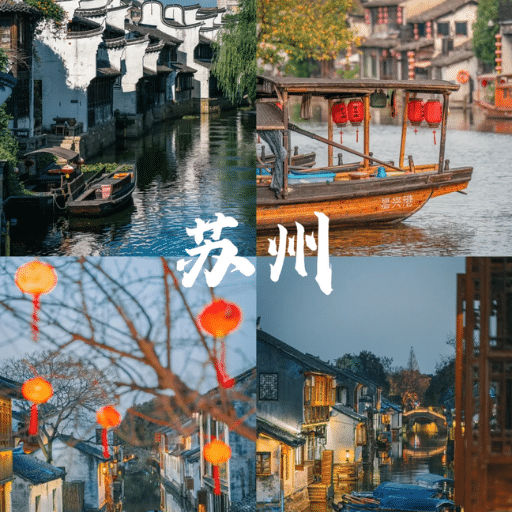
You can visit many fascinating places if you want to take a day trip while in Shanghai. One of the most convenient places is Suzhou, which is noted for its classical Chinese gardens and intricate canal network, which has led to its nickname being the “Venice of the East.” For history buffs, Hangzhou is home to a UNESCO World Heritage Site called West Lake, surrounded by verdant landscapes and historic temples. On the other hand, if you need a peaceful place that will give you some tranquility away from the bustling city, consider visiting Zhujiajiao water town with its serene waterways graced by traditional architecture and picturesque bridges. Each destination allows visitors to experience different cultures and natural scenes of this area.
Exploring the picturesque water towns near Shanghai
Having explored some fantastic water towns near Shanghai, I can confidently tell you a few things. The most accessible among them is Zhujiajiao, which is also referred to as ‘Venice of Shanghai’. It has historic bridges, calm canals, and local delicacies. A bit further out is Tongli, which, after more than a millennium, has beautiful gardens and well-preserved buildings, making it an ideal place for cultural immersion. On the other hand, at night, Xitang displays reflecting lantern-lit streams that create a magical contrast with its vibrant daytime atmosphere. In each case, these towns offer unique encounters blending tradition, splendor, and deep roots in history.
Visiting the classical gardens of Suzhou
The Suzhou Classical Gardens are an ancient heritage of Chinese landscape architects, known for intricate layouts, beautiful appearances, and cultural importance. These gardens were recognized as UNESCO World Heritage Site and date back to the 11th century, demonstrating the use of natural landscapes in combining architectural elements. Among the most renowned gardens is Humble Administrator’s Garden, the largest and most recognized, with its serpentine waterways, lush foliage, and well-crafted pavilions. It covers about 52,000 square meters and represents the apex of Ming Dynasty garden design.
Another favorite must-visit spot is Lingering Garden, widely praised for its brilliant use of space and artistic arrangement of rocks, halls, and courtyards. With an area of approximately 23,300 sq meters, this garden maintains a strong balance amongst rock, water, plants, and buildings, constituting classic Chinese gardens. On the other hand, though Master-of-the-Nets-Garden occupies a smaller area, measuring roughly 5,400 sq meters, it shows itself off because of its small size and integrated nature between residential place & garden; thus, borrowed from Song Dynasty sophistication.
These gardens are a great example of landscape design that involves borrowing scenery, simulated asymmetry, and layered senses such as flowing water sound. The artistic and philosophical values of ancient China that these gardens embody offer a peaceful shelter and a chance to peep into some good times in the country’s history. In this regard, efforts have been made to ensure their perpetuity for posterity.
Take a ride on the Shanghai Maglev train to experience modern engineering.
Firstly, experiencing the Shanghai Maglev train was an astonishing demonstration of contemporary engineering and scientific accomplishment. At its top speed of 431 km/h (267 mph), it operates through magnetic levitation; hence, no friction is experienced, thus making it smooth and nearly noise-free. It connects Pudong International Airport with Longyang Road within about seven minutes – impressive efficiency! Made with German technology, the train’s system uses electromagnetic force to lift and propel carriages. This progressive design reduces maintenance costs due to the absence of wear and shows precisely where high-speed transportation is heading. This exciting and flawless trip revealed another way advanced transport systems could work.
What are some unique cultural experiences in Shanghai?
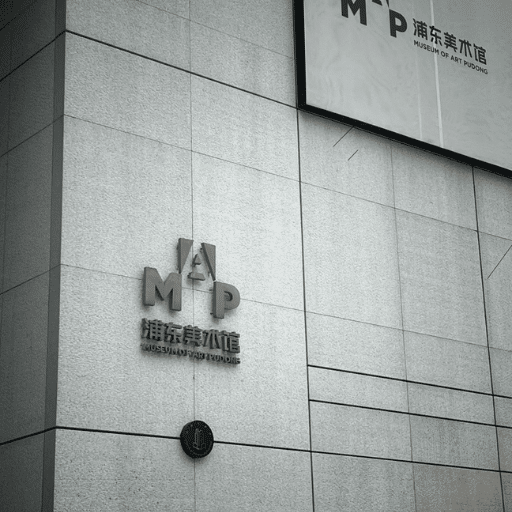
Shanghai offers a mixture of traditional and contemporary cultures. This can be seen by walking through the Yuyuan Garden, an excellent example of classical Chinese gardens, or looking at the modern skyline from the Bund. Moreover, exploring the Tianzi Fang area will give you insight into what local art and lively street culture look like; alternatively, traditional Chinese opera performances provide insights into rich theatrical traditions. Don’t visit Shanghai without trying out Xiaolongbao and going to Shanghai Museum to explore its historical and artistic heritage.
Discovering the hidden gems of the Shanghai French Concession
The charm of the French Concession in Shanghai is such that it feels like a real-life museum with loads of history, charm, and cultural intermarriage. While walking along streets lined with trees, I came across colonial buildings that have been well-conserved and now house small cafes, boutique shops, and art galleries. The peace found at Fuxing Park when people do Tai Chi in the morning is worth seeking. One particular gem for me was Tianzifang, narrow lanes filled with artists’ studios, crafts, and snug eateries – an art-lovers paradise. To enhance my historical understanding, I went to Sun Yat-sen’s former residence, which gave me insight into his personal life and the significance of this area during the Republican era. The perfect mix of present-day vibrancy and old-world charm characterizes the French Concession, which makes it a must-go destination for those who want to experience various aspects of Shanghai.
Exploring Shanghai’s Jewish heritage in the Hongkou District
Hongkou District is part of Shanghai’s history since it was a place where Jews fleeing from persecution during World War II sought sanctuary. From 1937 to 1945, nearly 20 thousand Jews, mainly from Germany, Austria, and East Europe, resided here, known as the “Shanghai Ghetto”. Despite everything war could do to them, they flourished, with schools opened as synagogues standing by their sides and little businesses popping up.
The Shanghai Jewish Refugees Museum has historic landmarks visitors can explore, such as the Ohel Moishe Synagogue. This museum displays exhibits of the refugees’ personal belongings, writings, and films made by the refugees as part of their struggles and survival. There are various highlights in connection with this, including historical accounts of resilience during tough times.
Some technical restoration details, such as preserving its wooden benches and stained glass windows, are also discussed to depict a great deal of historical accuracy. Unlike other museums, this museum boasts modern educational facilities, like interactive screens telling stories about Jewish survivors.
The Tilanqiao neighborhood in Hongkou also contains many of these remnants, including residences and businesses whose frontage remains intact. These sites provide an opportunity to appreciate the extent of compassion Shanghai demonstrated at that time while preserving memory through tangible actions.
Visiting the Shanghai Natural History Museum for a glimpse into China’s past
My visit to the Shanghai Natural History Museum is an experience I will never forget, as it brought China’s natural and cultural history alive. It has a wide choice of displays varying from fossils that date back to prehistoric times to highly detailed dioramas highlighting different ecosystems and rare species within the museum. The biggest attraction is dinosaur skeletons towering above other exhibits. With more than 11,000 specimens on show, the museum employs cutting-edge technology, such as touchscreen interactivity and immersive AV experiences, to captivate visitors of all ages. Also, its architecture makes it noticeable since the building has a sustainable design resembling a “cell” symbolizing life. The museum remains open between 9:00 AM – 5:00 PM, with the last entry at around 4:00 PM; tickets are sold at reasonable prices ranging from ¥30-¥45, which is good value for money spent on education and visual splendor like this.
How can I make the most of my time in downtown Shanghai?
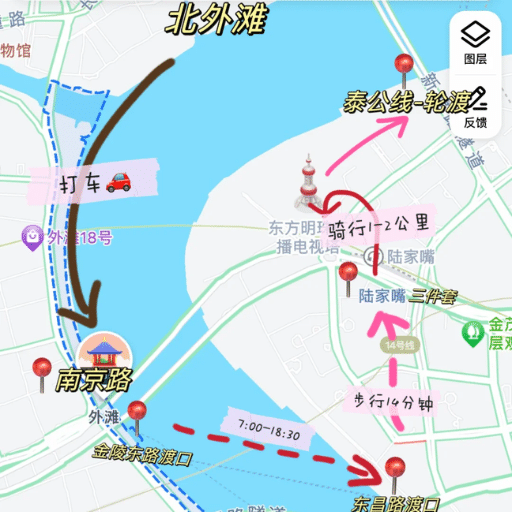
Begin your downtown Shanghai tour with a stroll in the famous Bund, where stunning views of the city’s historical architecture and modern skyline can be enjoyed. Other attractions, such as People’s Square, known for several museums, are also visited, or one could decide to take a walk around Yuyuan Garden, which offers a calm retreat with traditional Chinese gardens. For shoppers and diners, Nanjing Road and Xintiandi provide a variety of high-end stores, numerous eating joints, local boutiques, and other things you might want to buy. As for evening entertainment, an excellent choice would be an evening cruise on the Huangpu River, where you can enjoy the beautiful lights of Shanghai and feel its fast-pulsating lifestyle.
Shopping and dining adventures in Nanjing Road
Nanjing Road is heaven for both shopaholics and epicures. It stretches three miles and is one of the busiest shopping streets worldwide. Nanjing Road has something for everyone, from luxurious international brands to small local shops specializing in traditional Chinese crafts. Eating out options are just as varied—you can have some Xiaolongbao or go all posh with global cuisine. This vibrant atmosphere, buzzing crowds, and beautifully lit streets, especially at nightfall, make this street unforgettable for anyone visiting Shanghai, whatever time of year.
Enjoying the tranquility of Yu Garden in the heart of Shanghai
Yuyuan Garden, also known as Yu Garden, is a classical Chinese garden built during the Ming Dynasty, and it’s an oasis of calm amid Shanghai’s urban sprawl. With an area of more than 5 acres, this well-planned plot represents the traditional architecture of Chinese gardens with pavilions, ponds, bridges, and rocks. Having been constructed by Pan Yunduan for his parents in 1559, this garden has not only lasted numerous years but also portrayed its superb craftsmanship as well as cultural heritage.
The design at Yu Garden follows aspects associated with Chinese landscape architecture. This includes ‘Exquisite Jade Rock,’ a fantastic stone standing 3.3 meters high, complete with intricate holes displaying beauty through natural erosion, and ‘Grand Rockery,’ a tremendous fourteen-meter-high stack made from thousands of tons of stones. The Sansui Hall and Dianchun Hall are among the various halls that blend simple wooden structures with elaborately carved engravings, suggesting timelessness and elegance.
Visitors can fully experience the garden’s peace and quiet in a pond alive with koi or walk along a path covered by age-old trees. Visiting early in the morning or on weekdays is advisable to enjoy the quiet, as weekends and holidays are crowded. The entrance charge is between 30RMB (off-season) and 40RMB (peak season). The garden typically functions from 8:30 AM until 5:30 PM, thus making it ideal for leisurely afternoons.
Yu Garden isn’t just a place for meditation; right next to it lies the Yu Garden Bazaar, a vibrant market where people can eat local food, buy souvenirs, and soak up Shanghai culture simultaneously. It is an amalgamation of old and new so that every type of traveler who wishes to experience the city’s cultural heritage will get something out of it.
Taking in panoramic views from the Shanghai World Financial Center observation deck
In my experience, one of the most amazing views of the city skyline can be seen from Shanghai World Financial Center. From the highest deck, situated 474 meters above ground level, I was in awe of sprawling skyscrapers across Shanghai, including iconic landmarks such as the Huangpu River and Oriental Pearl Tower. The observation deck, referred to as “the Eye of Shanghai,” reveals a glass floor on the 100th floor, where visitors are given a thrilling view of the streets below.
When planning to visit this place, there are three levels: the 94th floor (423m), the 97th floor (439m), and the 100th floor (474m). The price for entry for adults is usually between RMB180 and RMB200, depending on your chosen level. Opening hours typically begin at 8 am -11 pm, which is very convenient since it allows viewing both nighttime sights and daytime views. It’s a must-see attraction, whether the stunning daytime panorama or simply fantastic city lights after sunset.
What are some off-the-beaten-path attractions for return visitors to Shanghai?
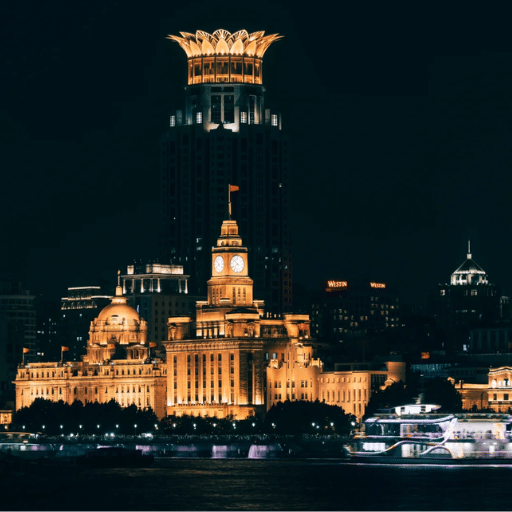
If you are a tourist returning to Shanghai and prefer not to follow popular sights, several less-known treasures can be ideal. The M50 Art District in Shanghai is the home of modern art, with various galleries, studios, and street art that show its creative side. If you need somewhere peaceful to relax, consider Zuibaichi Park Songjiang, one of the oldest classical gardens in Shanghai, offering beautiful landscapes and cultural significance. Another exceptional place is the Former French Concession, where quiet tree-lined streets reveal indie cafes, boutiques, stores, and historic buildings. Lastly, visiting Qibao Ancient Towns, you will see the traditional water town charm, with local snacks and an ancient riverbank setting.
Uncovering the artistic side of Shanghai at M50 Creative Park
If you want to explore Shanghai’s contemporary art scene, M50 Creative Park is the best place to be. This has now become a bustling center of artistry on Moganshan Road, where it was once a manufacturing location. On your way through M50, a collection of galleries exhibiting art from upcoming and accomplished artists in various mediums will captivate your attention. This is accompanied by street graffiti that gives the area an urban feel full of life. If you are into fine arts or just curious about them, then this place provides insights into China’s contemporary art and how it can be innovative. It is an absolute must-visit that captures Shanghai’s creative spirit.
Exploring the futuristic Pudong district beyond the famous skyline
Although Pudong is famous worldwide for its skyline featuring landmarks like Oriental Pearl Tower and Shanghai Tower, this district offers much more than mere high-rise buildings. Places like Lujiazui Central Park are great for walking trails with beautiful city views amidst greenery inside an otherwise built-up area. The Science & Technology Museum in Shanghai offers interactive exhibits on robotics, environmental science, and aerospace technology, among other things, thus offering visitors a chance to experience firsthand what they have learned in class during their field trip there.
Dive into the charm of the known Qiantan neighborhood, often regarded as Shanghai’s “Second Bund.” This burgeoning area is home to new urban development projects like Qiantan Fengpu Bridge and Taikoo Li Mall, which showcase contemporary architectural brilliance with a human touch. Pudong, too, embraces sustainability, with things like Dongtan Wetland Park, which is evidence of the move towards eco-friendly policies in Shanghai.
Pudong has it all for shoppers and foodies; there are fancy malls such as IFC Mall and an exciting night market at Tangqiao. Moreover, Pudong is not just about the fancy skyline characterized by futuristic innovation but also a vibrant culture far beyond those heights, thus making it another place to explore for anyone who wants a deeper understanding of modern life in Shanghai.
Experiencing local life in the traditional Tianzifang neighborhood
Tianzifang is a place that reveals the ancient shikumen architectural style of Shanghai and its energetic, artistic existence. Strolling down the narrow lanes, I came across an assortment of art galleries, small shops, and quaint little tea houses that mix traditional with contemporary designs. It is calm yet vibrant, with local people and tourists mingling over street food or drinking tea in hidden gardens. One of my highlights was buying some authentic handmade crafts and souvenirs made by local artists. When I visited Tianzifang, it felt like going back in time but not leaving its current-day vitality behind – perfect for those looking for a more genuine side of Shanghai.
References
Frequently Asked Questions (FAQ)
Q: What are some of the best things to do in Shanghai for first-time visitors?
A: First-time visitors to Shanghai should explore the city’s iconic attractions, such as the Bund, Yu Garden, and Shanghai Tower. Other must-see places include the Shanghai Museum, Nanjing Road for shopping, and a cruise on the Huangpu River to enjoy views of Shanghai’s impressive skyline.
Q: How can I explore Shanghai’s Jewish history?
A: To explore Shanghai’s Jewish history, visit the Shanghai Jewish Refugees Museum in the Hongkou District. This museum showcases the stories of Jewish refugees who found sanctuary in Shanghai during World War II. It’s one of the best museums to learn about this unique aspect of Shanghai’s history.
Q: What fun activities are available at Shanghai Disneyland Park?
A: Shanghai Disneyland Park offers a variety of fun things to do, including thrilling rides, spectacular shows, and meet-and-greets with beloved Disney characters. Don’t miss the Enchanted Storybook Castle, the TRON Lightcycle Power Run, and the Pirates of the Caribbean: Battle for the Sunken Treasure attraction.
Q: What are some popular Shanghai attractions for history buffs?
A: History enthusiasts should visit the Shanghai Museum to explore Chinese art and artifacts, the Shanghai Municipal History Museum for insights into the city’s past, and the Jade Buddha Temple, one of the oldest temples in Shanghai. The Former French Concession area also offers a glimpse into Shanghai’s colonial history.
Q: What’s the best way to get panoramic views of Shanghai?
A: For breathtaking views of Shanghai, head to the observation decks of the city’s skyscrapers. The Shanghai Tower, Oriental Pearl TV Tower, and Jin Mao Tower offer stunning vistas of the Shanghai skyline. The Bund also provides excellent views of the Pudong area across the Huangpu River.
Q: What unique museums should I visit in Shanghai?
A: Besides the Shanghai Museum, visit the Shanghai Science and Technology Museum for interactive exhibits and the China Art Museum for modern Chinese art. The quirky Shanghai Propaganda Poster Art Centre offers a unique perspective on China’s recent history.
Q: What fun things do families with children do in Shanghai?
A: Families can enjoy Shanghai Disneyland, the Shanghai Ocean Aquarium, and the Shanghai Wild Animal Park. The Shanghai Natural History Museum and Shanghai Science and Technology Museum are also great educational attractions. For outdoor fun, visit Century Park or the Shanghai Zoo.
Q: What’s the best time to visit Shanghai for sightseeing?
A: The best time to visit Shanghai for sightseeing is spring (March to May) or autumn (September to November) when the weather is mild and pleasant. These seasons offer comfortable temperatures for exploring Shanghai’s attractions and enjoying outdoor activities without the summer heat or winter chill.

